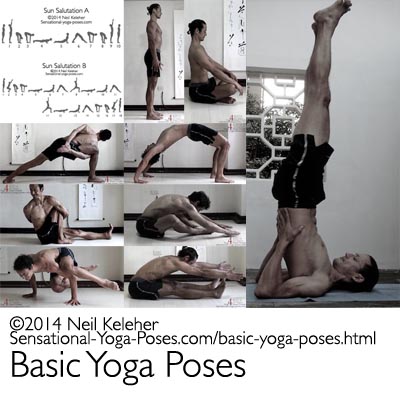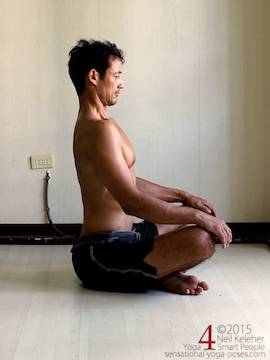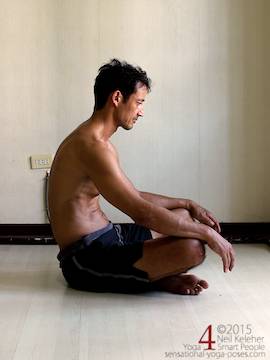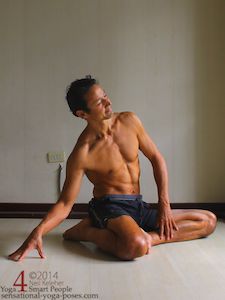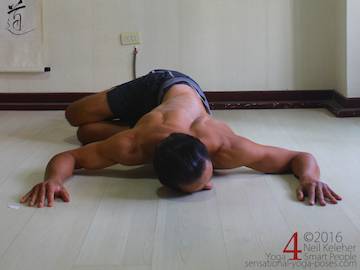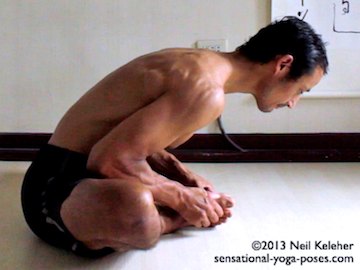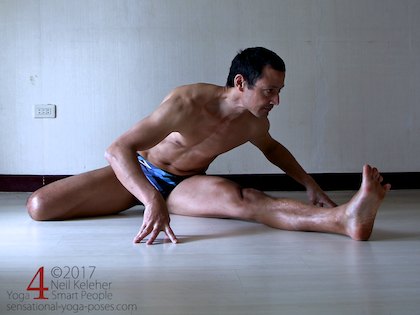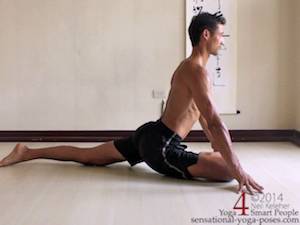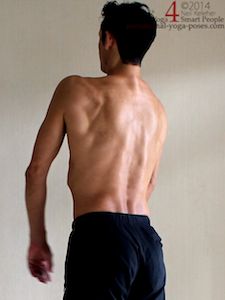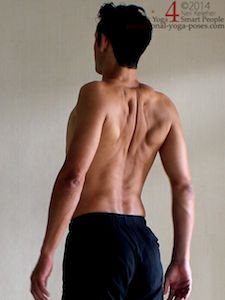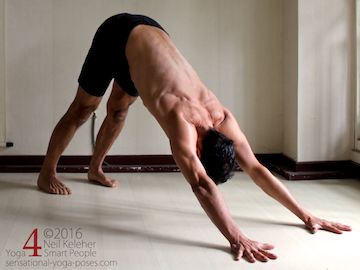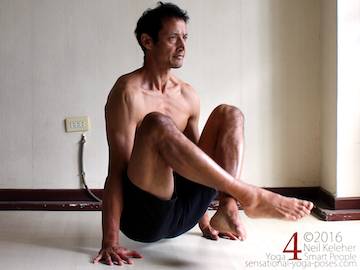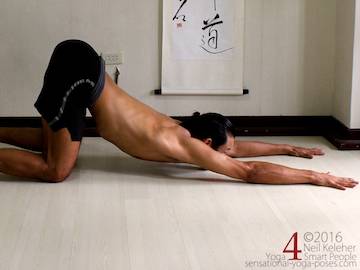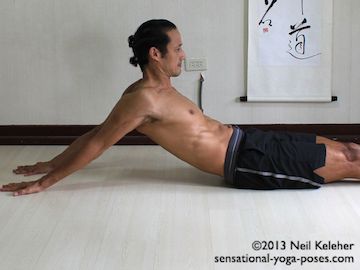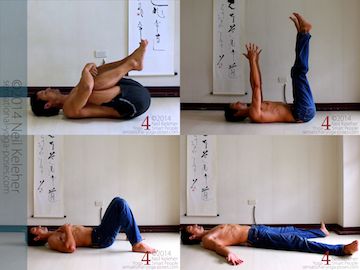Basic Yoga Poses
Counterposing for a balanced yoga practice
An important idea for any basic yoga practice is the idea of counterposing to restore balance.
What does that mean?
Generally it can mean countering forward bending poses with back bending poses and vice versa. But that's a bit too general to be useful.
Talking about counterposing forward bends with backwards bends and vice versa (and twisting, or side bending for that matter), it helps to specify which part of the body is doing the bending or twisting.
Counterposing Basic Spine Movements
Focusing on the spine, if you do a pose in which the spine is bending forwards then for balance do a pose in which the spine is bend backwards. It goes without saying that if you bend or twist it to the right then also do the same bend or twist to the left.
And as a side note, bending the spine and twisting it are not mutually exclusive. You can bend the spine as you twist it.
If you were really anal (or really intelligent) you could break down the spine even further and so in any basic yoga pose practice include back and forward bends for the lumbar spine, thoracic spine and cervical spine. Likewise with side-bends and twists for each section of the spine.
Counterposing for hip rotation
Focusing on the hip joints, a balanced basic yoga pose routine for the hips would include internal and external rotation of the hip joints.
Bound angle poses can be classed as an external rotated thigh position. The previously mentioned hero pose with the shin folded to the outside of the thigh is an internally rotated thigh position pose.
Another possible contender for internal thigh rotation is hurdlers stretch. This "basic" yoga pose does tend to get a bad name for itself. I like it as a challenge. I'd leave it out though if you have knee problems, or if you do choose to do it, then, like any other pose, move into it and out of it mindfully.
Counterposing hip flexion and extension
A balanced basic yoga pose routine for the hips would also include back bends for the hip to counter pose forward bends.
An example of a backwards bend for the hip is pigeon pose, particularly when done with the torso upright. The leg that gets the backward bend for the hip is the rearmost leg in this basic yoga pose.
Bent knee versus straight knee hip extension and flexion
Whether the knee is straight or bent can affect the hip, particularly the hamstrings, and so for forward bends of the hip you might want to include forward bends with the knee bent (easier). Forward bends with the knee straight can act as a hamstrings stretch.
On the other hand, stretching the hip flexors with the knee straight tends to be easier since the quadriceps are out of the equation. When you bend the knee, hip flexor stretching becomes a little bit less pleasant.
Counterposing hip adduction with abduction
And it would include adduction (moving the leg inwards relative to the pelvis) to counter-pose abduction (moving the leg outwards.)
One way to adduct the hips is to cross the legs with knees straight while standing. Another is to push the hips to the side in a standing side bend.
One way to abduct the thighs, and stretch the adductors is with the half side split adductor stretch.
Bending the knee to stretch the quadriceps can be done with the hip bent forwards, which tends to be easier. Bent knee hip flexor stretches can be done to stretch the rectus femoris in particular.
Counterposing shoulder blade movements
In terms of the shoulders, protraction of the shoulder blades can be balanced with retraction, elevation with depression.
Downward facing dog and table top
And if you do a basic yoga pose where you stretch or move the arms in an up and back direction, as in downward facing dog, then you should also include a basic pose where you stretch the arms in a down and back direction say in table top.
Similarly, if stretching the shoulders in an up and back direction say with puppy dog shoulder stretch, then balance it a stretch like rack pose.
Counterposing inversions
Generally for inversions where weight is on the arms, shoulders or head (handstand, pincha mayurasana, headstand, shoulder stand), counterposing can involve hanging upside down from your waist in a standing forward bend. So for example, if doing handstands or other handstand variations, then I tend to finish class off with a standing forward bend.
For a pose like shoulder stand where the neck is bent forwards, a counterpose could be a pose like locust where the neck is bent back.
Adding easier variations of poses
If you find a certain combination or sequencing of poses doesn't work (for me it used to be wheel pose followed by Shoulder Standshoulder stand or plough pose), then don't do them or use some intermediary poses to better prepare you.
So for example, I could have included some sort of forward bend for the neck to transition to shoulder-stand like rabbit pose.
Counterposing to unwind
The idea of counterposing is to make sure you aren't messing up the body. But it can also be used to make sure that you feel good that you unwind from each pose, and to that end some experimentation can be useful.
Wrapping up and relaxing
Towards the end of a class, if I haven't done much in the way of back bends, I tend to end with something like bridge. But to counterpose that, I then have students lie on their backs with arms and legs up for a pose I call dead dog or dead dog reach (same pose but with hips and upper back and head lifted.) Where bridge can be a back bend for the spine and hips, dead dog is more of a forward bend for the hips. It becomes a forward bend for the spine if the head, chest and hips are lifted.
Relaxing at the End
At the end of any yoga practice the usual practice is to rest in corpse pose (shivasana.) If I've done dead dog or dead dog reach, I might hug knees first then move into corpse pose. You could simply slowly your arms and legs from dead dog reach into corpse pose. An option for corpse pose is to rest with your hands on your heart. You could do this with your knees bent and feet flat on the floor also.
Flexibility and Strength
If basic yoga postures are difficult due to a lack of strength or flexibility then you may find it helpful to focus on poses in a way to help you improve your strength or your flexibility or both.
Published: 2017 03 21
Updated: 2023 03 24
